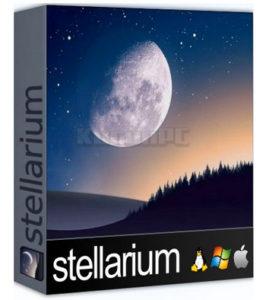
A view facing south tonight, July 17, 2016, illustrating the location of the ecliptic, the imaginary plane of the solar system. Screenshot courtesy of Stellarium.

Annotated image of the galactic center to the east (left) of Antares and the rest of Scorpio. The beautiful galactic cluster, Messier-7 to the east (left) of the scorpion’s “stinger” can be seen in this image. Image credit: abc.net.au.
As twilight deepens tonight and as you step outside facing south, it’s as though nature was trying to dress to impress, complete with her best jewels! Tonight’s waxing gibbous moon, less than 24 hours before full, is in Sagittarius, set against the far more distant galactic center. Although the sky’s brightness will continue to increase to maximum as the moon waxes towards full, it will sill be possible to glimpse the ethereal beauty of the Milky Way if observed under normally dark skies.
Further west along the ecliptic is nature’s ringed beauty, Saturn followed by brilliant-red Mars, having just passed opposition. To the south of Saturn and completing tonight’s stunning celestial spectacle is the 620-light-year distant red supergiant star, Antares, the heart of Scorpio, the scorpion.
It should be noted also, in the general direction of tonight’s view towards the south, the sky is rich with many other beautiful objects of interest, objects best observed with binoculars. One such object is the brilliant galactic cluster, Messier-7, located to the east (left) of the scorpion’s “stinger” and featured as NASA’s Astronomy Picture of the Day for July 13. The “Messier” catalog of 110 non-stellar objects was compiled by Charles Messier, an 18th Century French astronomer and comet hunter as an exclusion list of “non comets”.
At over ten times the distance to Antares and directly to its west is Messier-4 (M-4), a globular cluster and the most distant object on tonight’s menu. Although visible in a pair of binoculars as a soft, fuzzy globe, a telescope is required to reveal its true nature as an agglomeration of over 60,000 stars, all gravitationally bound together. Stars in these clusters, as compared to the hot, young stars in galactic clusters such as M-7, are among the oldest stars in the universe. Upon close inspection of the featured image above, M-4 is visible directly to the right of Antares.
Many illustrations featured in this blog and used throughout the website in general are produced with Stellarium
, a high-quality, free, open-source digital planetarium for your desktop.
Download Stellarium for free



